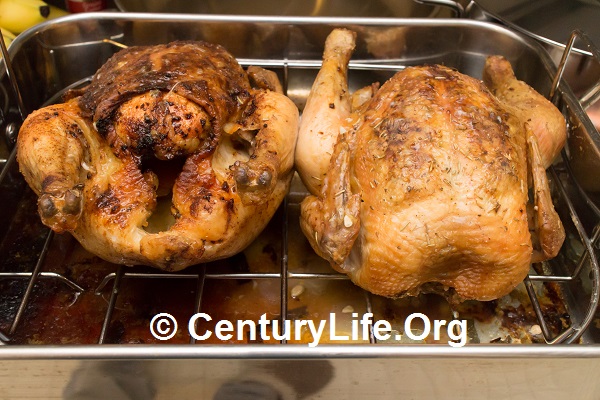Cooking food tends to kill pathogens and improve digestibility, so it’s no surprise that humans have evolved to like the taste of cooked foods. But why does cooked food taste so yummy?

MAILLARD REACTIONS
In 1912, the French chemist Louis-Camille Maillard (“my-YARD” or among some Americans, “mah-LARD”) published “Formation of Melanoidins in a Methodical Way,” a paper in which he described the chemical reaction between amino acids and sugars that produces thousands of flavors (depending on exactly which amino acids and sugars are involved). These “Maillard reactions” occur most readily at higher temperatures (typically above 140C/284F). For meats, Maillard reactions can produce thousands of types of flavors and aromas depending on the exact foods in question.1 For example, Maillard reactions are responsible for the tastiness of browned (roasted, seared, etc.) meat, cooked onions, toast, roasted coffee, and fried potatoes. 2
Water can absorb a lot of heat and slow down Maillard reactions, so for stovetop cooking you don’t want a lot of moisture if you want more Maillard reactions. So pat those steaks dry before cooking. However, it is possible for Maillard reactions to occur despite the presence of water, if the water is hot enough (e.g., inside of a pressure cooker).
In contrast, a higher pH helps accelerate Maillard reactions.3 Thus adding baking soda to a marinade right before cooking meat can encourage Maillard reactions. (You still want an acidic marinade for 99% of the marinating time period, as the acids allow deeper penetration of the marinade, so you would add baking soda to the marinade only at the very end.)
Related to Maillard reactions is caramelization (e.g., of onions), where sugars in foods break down, the difference being that such caramelization doesn’t involve amino acids.
At high temperatures (over 350F), pyrolysis starts to occur and picks up strength as you go higher in temperature. Pyrolysis is more commonly known as burning or charring food. Blackened meat tastes bitter and is laden with carcinogens (cancer-causing chemicals), so you want to avoid this.
COOKWARE
From a cookware perspective, we want to encourage Maillard reactions and discourage going too far over or under the Maillard temperature range when cooking food. Staying within the 140 C to 180 C (284 F to 356 F) range should give you plenty of Maillard reactions without going so high as to produce carcinogens.
With lower-end pans, tossing in a cold steak will drop the temperature down below the Maillard reaction temperature range, so you wind up steaming the steak while you wait for the pan to get back up to temperature. That’s lost cooking time you can’t make up, resulting in a much less tasty steak.
A common way to try to work around the limitations of a low-end pan is by heating the pan to extremely high temperatures first, the idea being that if you start off higher, then the pan’s temperature will also bottom out higher. That’s problematic because a) the smoke point of healthier cooking oils like extra-virgin olive oil maxes out at ~350F (beyond which the oil breaks down and produces carcinogens), b) overly high temperatures produce more carcinogens, and c) lower-end cookware won’t be able to spread high heat around fast enough, so the center of the pan might be, say, 450F, while the edges are 300F.4 You can sometimes work around that unevenness by stirring the food so that each piece gets about the same amount of time above the hot spot of the pan, but not all foods are stirrable; for instance, proteins like fish and steaks like to stick to the pan until they naturally release after several minutes. Furthermore, sometimes you have other things to do in the kitchen and can’t be babysitting one pan full-time for several minutes.
A higher-end pan should therefore spread heat evenly and hold it well enough so that you don’t have to overheat the pan and/or cooking oil in an attempt to head off a temperature crash. Other factors like handling, cost, and time/cost of preheating matter, too, so you don’t necessarily want to cook on a 500-pound block of aluminum just because it spreads heat evenly and holds it well. That would be overkill. But in my experience, it is rare for a cookware manufacturer to give consumers too MUCH metal. Usually it’s the other way around: they try to make a pan as thin and light as possible to save on materials and transportation costs. That’s why higher-end pans weigh more: the manufacturer didn’t skimp on metal, and the resulting cookware achieves more even heat and can hold it longer, without over- or under-heating food and cooking oil.
FOOTNOTES